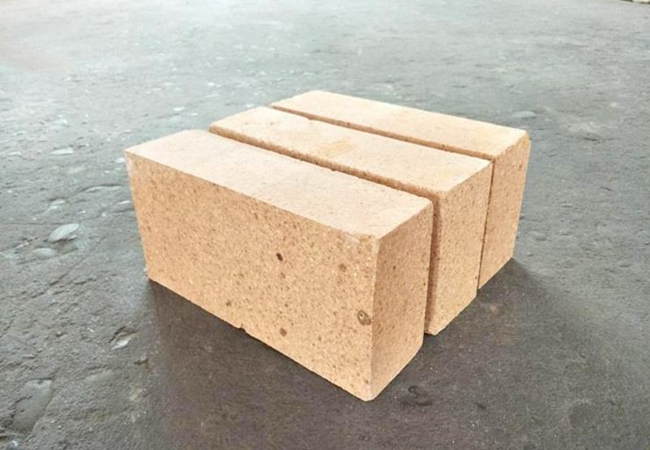나. Classification according to the cause
According to the generation of clay, 1차 점토와 2차 점토로 나눌 수 있습니다.
1. 1차 점토 (잔여 점토라고도 함)
Its rock is mainly feldspar by weathering and stays in the parent rock area of the product. After the weathering of the rock, it generates kaolinite. Quartz and soluble salts, soluble salts dissolved due to rainwater washing and go, and the residue is only kaolin and quartz sand, due to the presence of quartz sand, plasticity is poor, this soil is usually also known as kaolin.
2. Secondary clay (also known as drift accumulation clay)
It is a clay mineral deposited again by a primary clay in rainwater rivers and transferred to other places. Its main characteristics are a. In the drifting process, particles of quartz sand are heavier and deposited first removed, and the clay itself also by friction and becomes fine, so plasticity is better. b. In the drifting process, there are other minerals or organic matter mixed in, thus reducing the purity of clay minerals.


II. According to the composition of the main clay mineral classification
1. kaolin clay
Belonging to this category are kaolinite, pearl clay, dikaiite, and polyhydric kaolinite. Kaolinite is named after the kaolinite place near Jingdezhen, Jiangxi Province, 중국, where it was first found. The clay mainly composed of them is called kaolinite, such as the famous Suzhou kaolinite in China, Hunan Jie kaolinite, and Sichuan Xuyong multi-water kaolinite, 등.
2. Montmorillonite (microcrystalline kaolinite) category
Belonging to this category are montmorillonite, baileyite, 등., mainly have their composition of the clay is called swelling clay, such as Northeast Montenegro, Fujian Liancheng bentonite, 등.
(Bentonite commonly known as white clay, clay mineral composed mainly of montmorillonite-type minerals, with good water absorption and swelling, bonding, adsorption, catalytic activity, thixotropy, suspension, plasticity, lubricity and cation exchange properties, and a series of special physical and chemical functions.)
3. Illite clay
Some scholars have suggested using the abbreviation of Illinois, U.S.A. to call this class of minerals, hence the name illite. Belonging to this category are water mica, sericite, 등. This type of clay alone constitutes very little, most are contained in other clays. Illite is mainly clay mainly water mica clay or sericite clay, such as Hebei chapter village soil, and Jiangxi, Anhui, and other provinces produced porcelain stone also includes such.
4. Leaf wax stone class
Leaf wax stone does not belong to the clay minerals, because some of its properties are close to the clay, and classified as clay. Such as Fujian’s Shoushan stone and Zhejiang Qingtian, Shangyu leaf wax stone.
5. water aluminum quartz class
This category is uncommon clay minerals, often contained in small amounts in other clay, the amorphous state exists. Such as Hebei Tangshan A, B, C alunite.
III. Classification by refractories
1. 내화물 점토: refractories in 1580 ℃ above containing iron oxide not more than 3 ~ 4%, the highest total impurities 6 ~ 8%.
Refractory clay and bauxite are used as refractory materials. In addition to their high refractories, they can maintain volume stability under high-temperature conditions and have slag resistance, resistance to rapid cold and heat, and a certain mechanical strength, so they are exceptionally firm after calcination.
China is rich in refractory clay resources. The total retained reserves are 2.1 billion tons. 있다 327 mines with proven reserves, which are distributed all over the country. Shanxi has the most refractory clay mines, 회계 27.9% of the country’s total reserves. Followed by Henan, Hebei, Inner Mongolia, Hubei, Jilin, and other provinces (regions). The genesis of deposits can be divided into sedimentary (such as Shanxi Taihu Shi, Hebei Zhao Gezhuang, Henan Gong County, Shandong Zibo refractory clay ore, 등.) and weathering residual type (such as Guangdong Feitian Yan refractory clay ore) two types, mainly sedimentary type, accounting for more than 95% of the reserves. Refractory clay main mineralization period for the Paleozoic, Mesozoic, and Cenozoic next.


2. 내화물 점토: refractoriness of 1350-1580 ℃.
3. Fusible clay: refractoriness below 1350℃, contains a lot of impurities, generally high iron content.
Refractory clay can be used to manufacture lining bricks applicable to metallurgical furnaces, kilns of the silicate industry, coke ovens, 등. Refractory clay is gray or light yellow after calcination, and white is the best raw material for manufacturing porcelain.
Refractory clay can be used to make tiles, 도기류, stoneware, 등.
Fusible clay can be used to make brick and tile, coarse pottery, 등.
IV. Classification by custom
1. Kaolin: It is the purest clay. The plasticity is poor and the color ranges from gray to white after firing.
2. Clay: It is generally a secondary clay, so it is finer in particle size, good in plasticity, and contains more impurities.
3. Barren clay: harder, not loose in the water, plasticity is very small not easy to form plastic mud group. Such as Shanxi Datong soil.
4. Shale: its properties and barren clay are similar, but contains more impurities (K2O, Na2O, TiO2, CaCO3, Fe2O3, 등.), up to more than 25%, red, brown, yellow, gray, and other colors after burning.
V. Classification by plasticity index
1. High plasticity clay, plasticity index greater than 15.
2. Medium plasticity clay, plasticity index between 7-15.
3. Low plasticity clay, plasticity index less than 7.
VI. Classification by dry sensitivity
1. High-sensitivity clay, dry sensitivity coefficient is greater than 2.
2. Medium-sensitive clay, dry sensitivity coefficient between 1-2.
3. Low sensitivity clay, dry sensitivity coefficient is less than 1.
Leave your request for PER refractory bricks and castings! We will get back to you within 12 시간!
